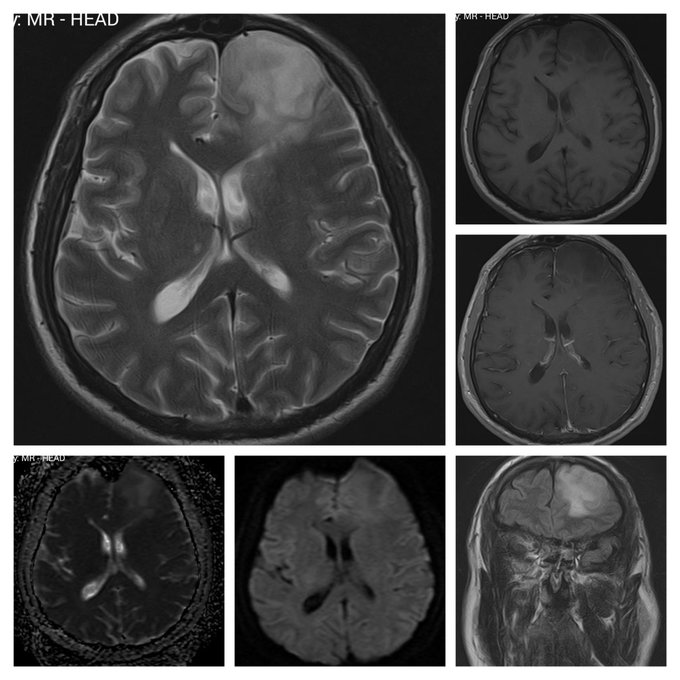
A simple case this time. Select the likely diagnosis in this 48-year-old male who presented with two episodes of generalized seizures. No signs of infection & normal exam.
- Glioblastoma
- Low-grade glioma
- Lymphoma
- Metastasis
- Herpes encephalitis
Answer
Congratulations, it’s a low-grade Oligodendroglioma (grade II). Low-grade gliomas are mostly non-contrast enhancing, have minimal surrounding edema, lack diffusion restriction, and usually present with seizures. Oligodendroglioma can have calcifications.
Glioblastoma is high-grade lesions that typically show heterogenous or peripheral contrast enhancement and central necrosis. They have significant surrounding edema.
Lymphoma can be peripherally located in the lobes, but are commonly periventricular and homogenously enhanced.
Metastatic lesions can be intra-axial or dural-based and are a close differential of high-grade glioma as they share the findings of peripheral contrast enhancement, central necrosis, and surrounding edema.
Herpes encephalitis typically involves bilateral temporal lobes and basal ganglia, although it can involve any part of the brain. There is usually heterogeneous contrast enhancement.

